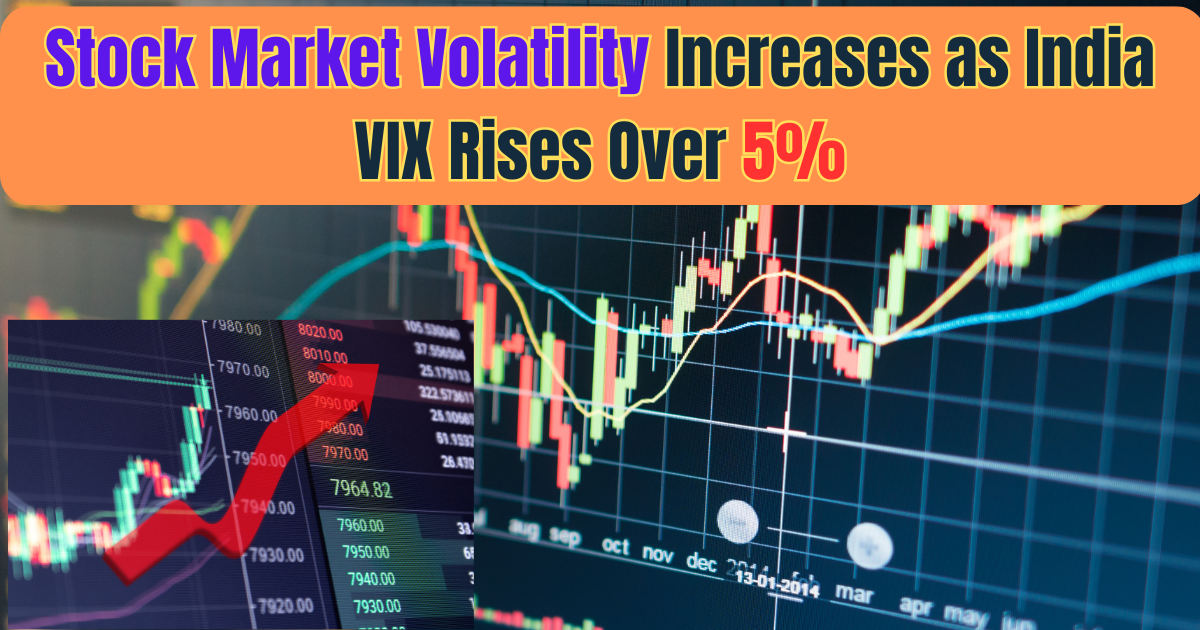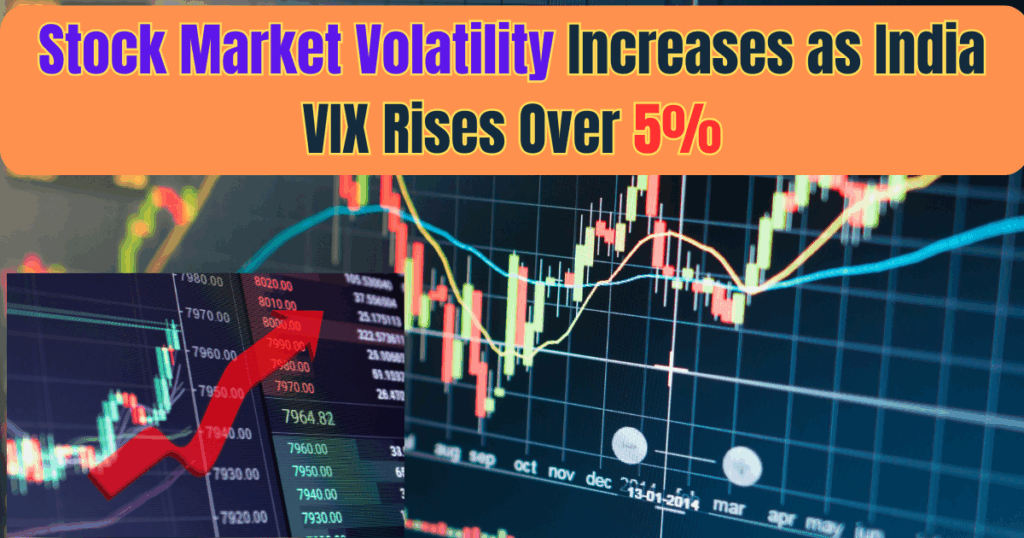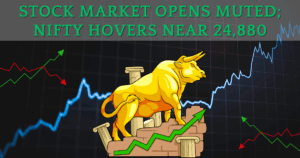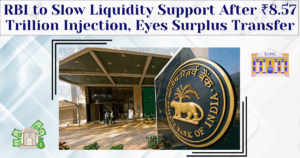Stock Market Volatility Increases as India VIX Rises Over 5%: Market volatility is an inherent part of investing, and traders often seek indicators to gauge uncertainty and risk. One such key metric is the India VIX of the Indian stock market. India VIX measures the expected market volatility over the next 30 days; it is based on the demand and supply of the NIFTY options prices.
Stock Market Volatility Increases as India VIX Rises Over 5%:
The India VIX index, a key measure of market volatility, spiked 3%, reflecting heightened fear and uncertainty. Investor sentiment across Indian equity markets shifted sharply toward caution. The spike indicates that traders are pricing in greater market swings over the coming sessions.

The indicator of near-term market volatility based on the prices of derivative option contracts typically cools off after key political events conclude. The Index, however, had already swung lower in March before voting began.
Market analysts reckon that the volatility index may rise just ahead of the election outcome. However, the increase may remain capped, as the volatility index indicates that participants are confident about the near-term market trajectory.
Understanding the Volatility Index (VIX)
The CBOE Volatility Index (VIX), also known as the “Fear Index, was developed by the Chicago Board Options Exchange to measure market expectations of volatility in S&P 500 Index options. Created through the financial research of Menachem Brenner and Dan Galai in the late 1980s, the VIX reflects investor sentiment and the expected degree of price fluctuations over the next 30 days.
India VIX Primarily indicates the level of uncertainty in the market. A high India VIX suggests that investors expect increased price volatility, particularly in high beta stocks. The India VIX fluctuates depending on market conditions. It is under normal circumstances; it typically ranges between 11 and 17. India VIX and NIFTY generally share an inverse relationship—when VIX rises, NIFTY tends to fall, and vice versa. This occurs because increased uncertainty drives demand for protective PUT options, raising VIX and putting selling pressure on stocks, which pushes NIFTY lower.
What is the India VIX in the stock market?
The India VIX, or India Volatility Index, measures expected market volatility for the NIFTY Index. It’s calculated using factors like strike price, market price, expiry date, risk-free returns, and volatility by analysing the best bid and ask prices of near and next month NIFTY options on the NSE.
This index indicates how much the market is expected to fluctuate over the next 30 days. Investors and traders interpret it in the following ways:
- A higher India VIX signals more significant fluctuations in stock prices. It shows higher market uncertainty or risk.
- On the other hand, a lower India VIX implies lower expected volatility and a relatively stable market outlook.
India VIX in the Context of Option Pricing
India VIX plays a crucial role in option pricing by reflecting market expectations of future volatility. For option traders, understanding India VIX is essential, as it helps gauge potential premiums.
- A higher India VIX suggests larger expected price movements, leading to increased option premiums.
- A lower India VIX indicates reduced expected volatility, resulting in lower option premiums.
These insights are valuable for both buyers and sellers in strategising their trades.
Investor wealth, as suggested by the BSE market capitalisation (m-cap), fell around Rs 4.5 lakh crore to Rs 414.03 lakh crore compared with a valuation of Rs 418.50 lakh crore recorded in the previous session. Frontline stocks such as HDFC Bank, ICICI Bank, Reliance Industries Ltd, PowerGrid, Infosys, Bharti Airtel, ITC, HUL, Kotak Mahindra Bank, TCS and Bajaj Finance contributed to the fall today.
How is the India Volatility Index Calculated?
India VIX forecasts volatility in the Indian markets for the next 30 days, deriving its value from the NIFTY options order book.
- Time to Expiration (T): The remaining minutes until option expiry, expressed as a fraction of a year.
- Risk-Free Rate (R): A short-term rate, such as NSE MIBOR.
- Forward Index Level (F): Derived from NIFTY futures prices of the same expiry
Conclusion
In this article we discussed stock market volatility increases as India VIX rises over 5%. The India VIX index, a key measure of market volatility, spiked 3%, reflecting heightened fear and uncertainty. This index indicates how much the market is expected to fluctuate over the next 30 days.









